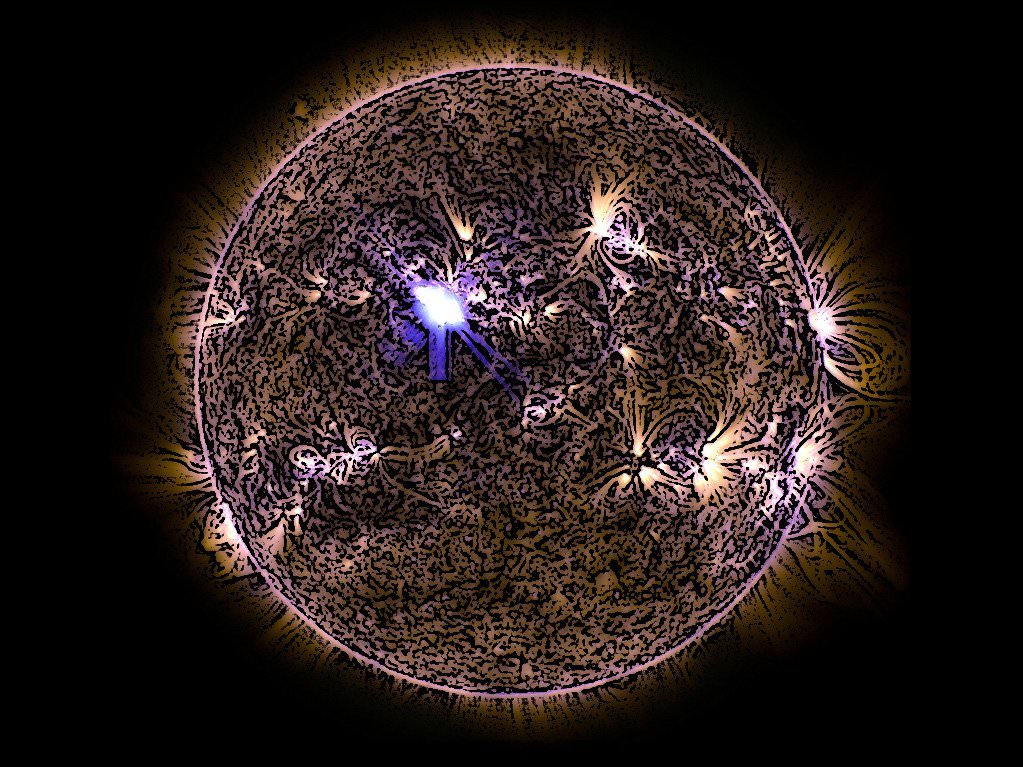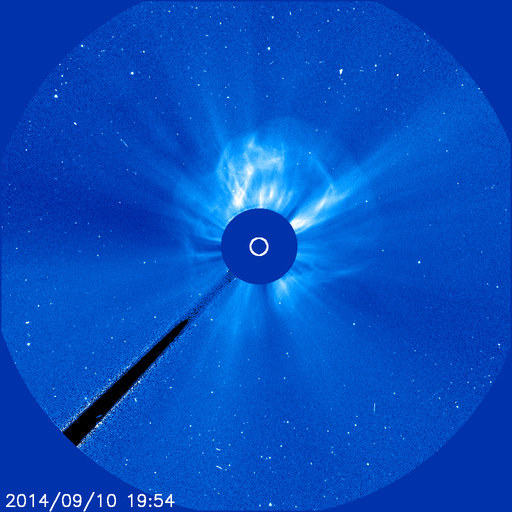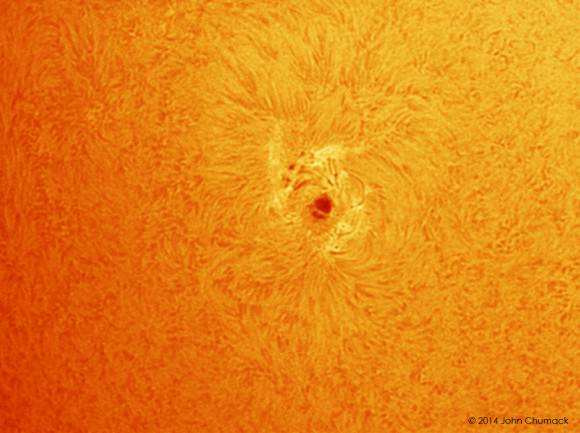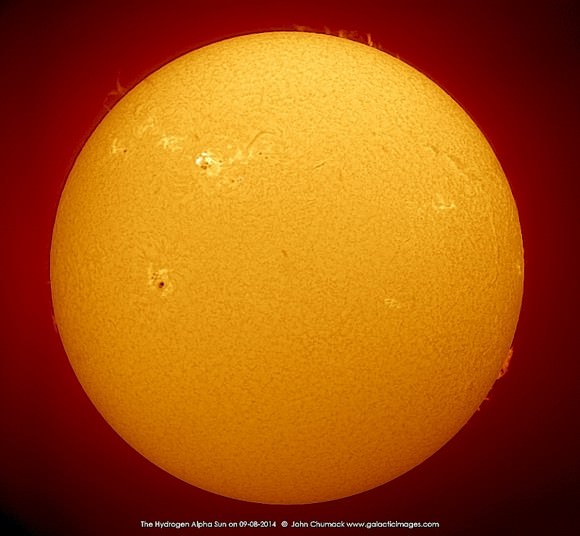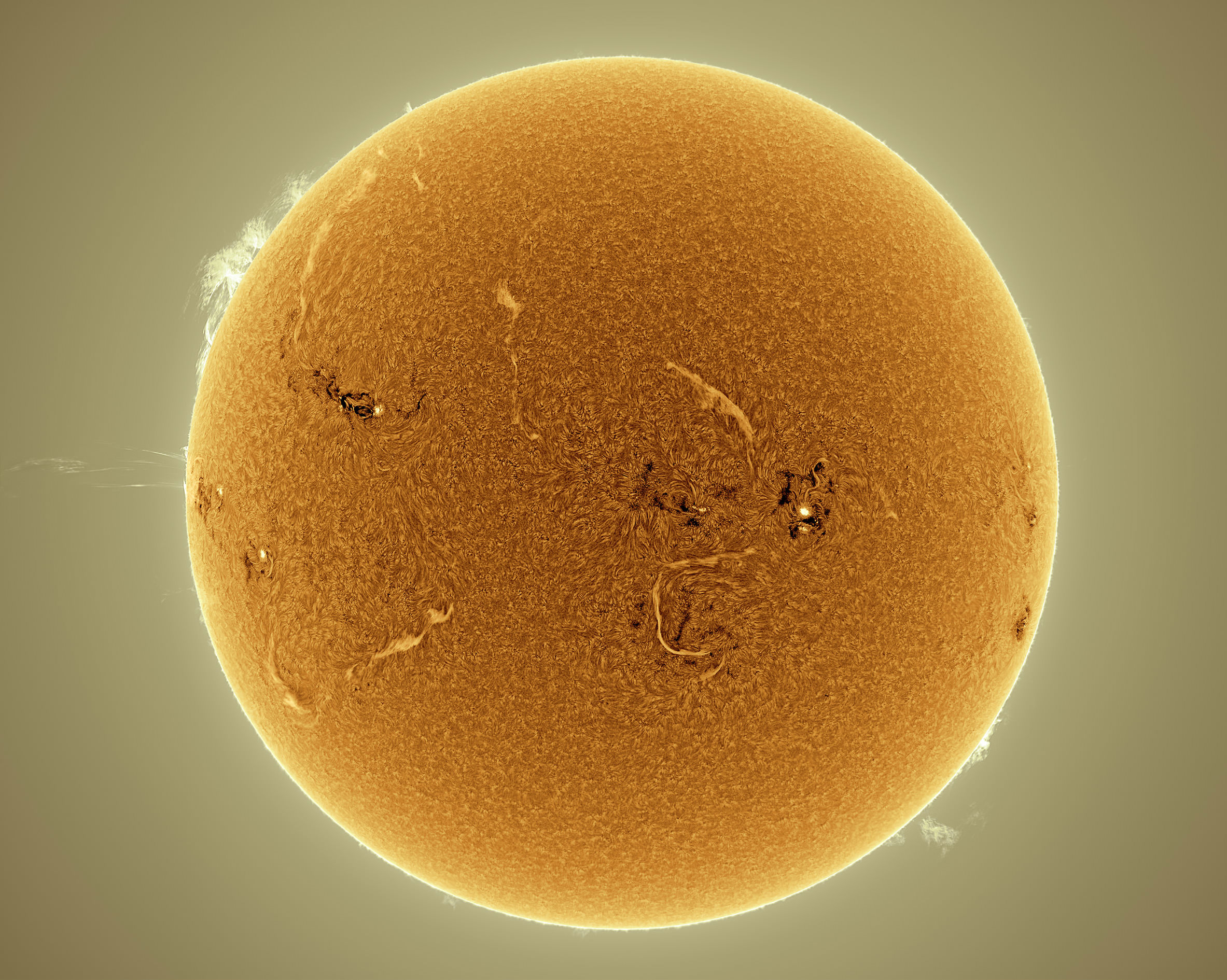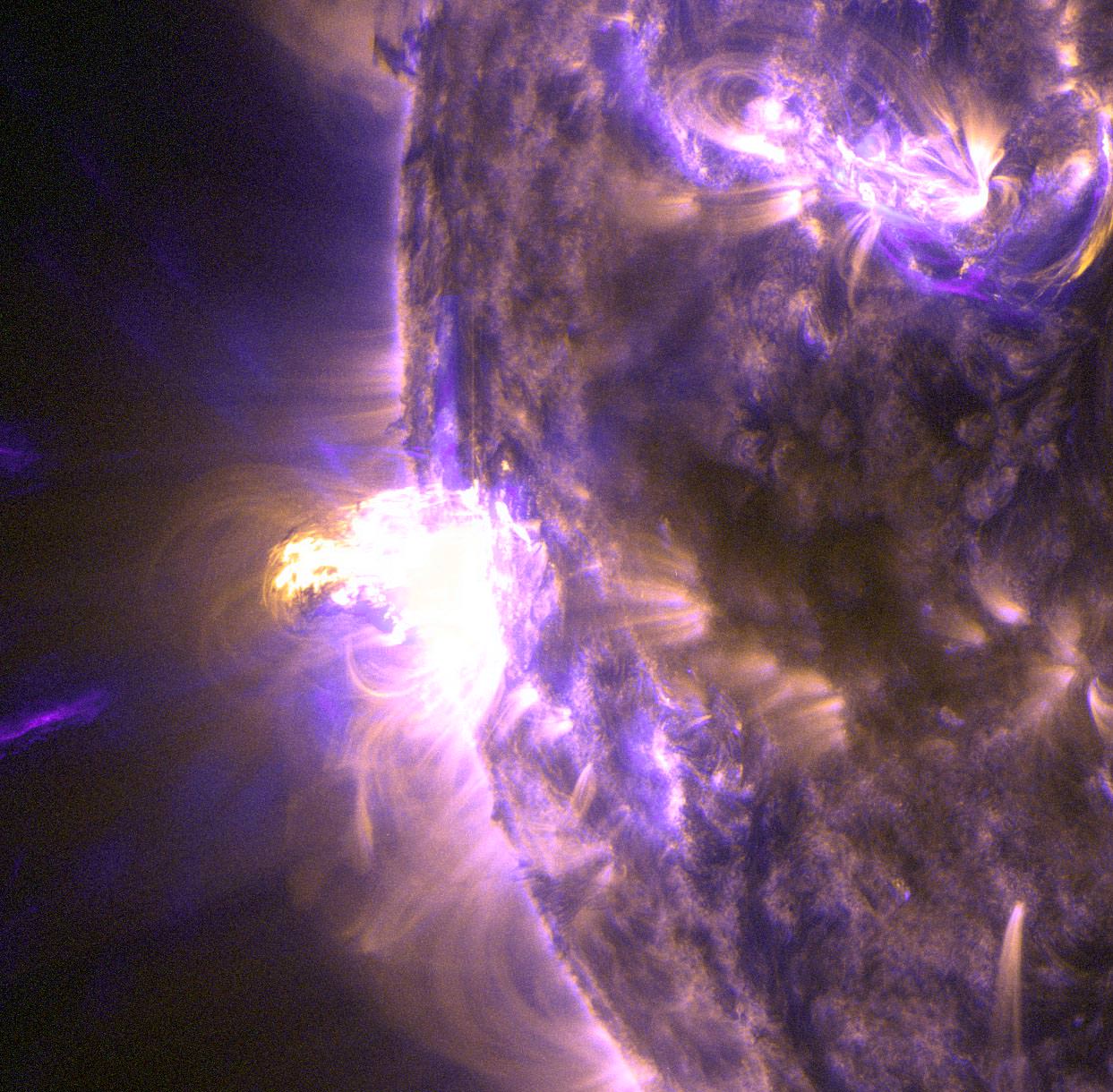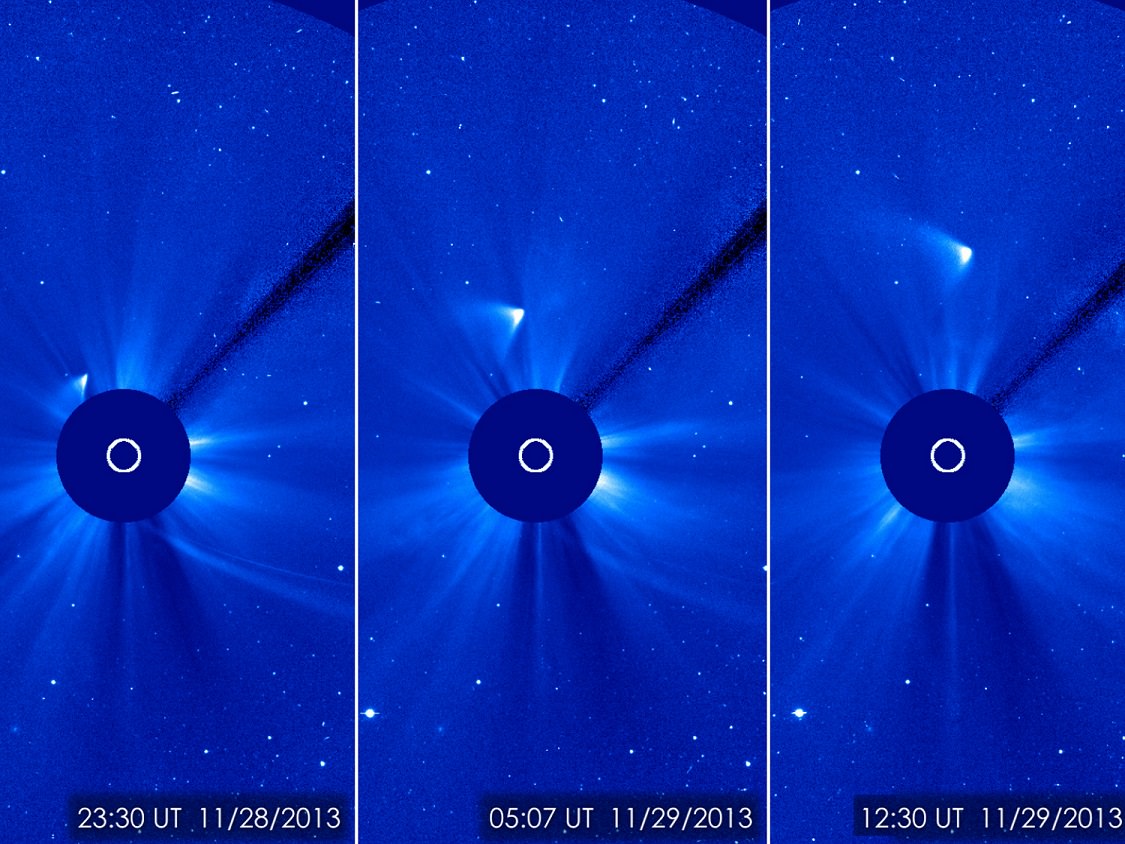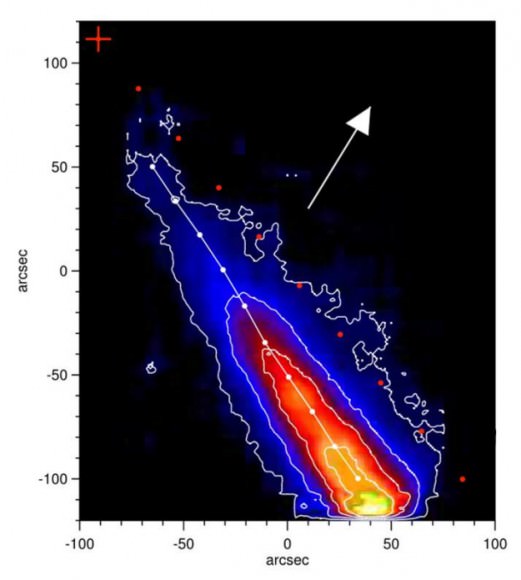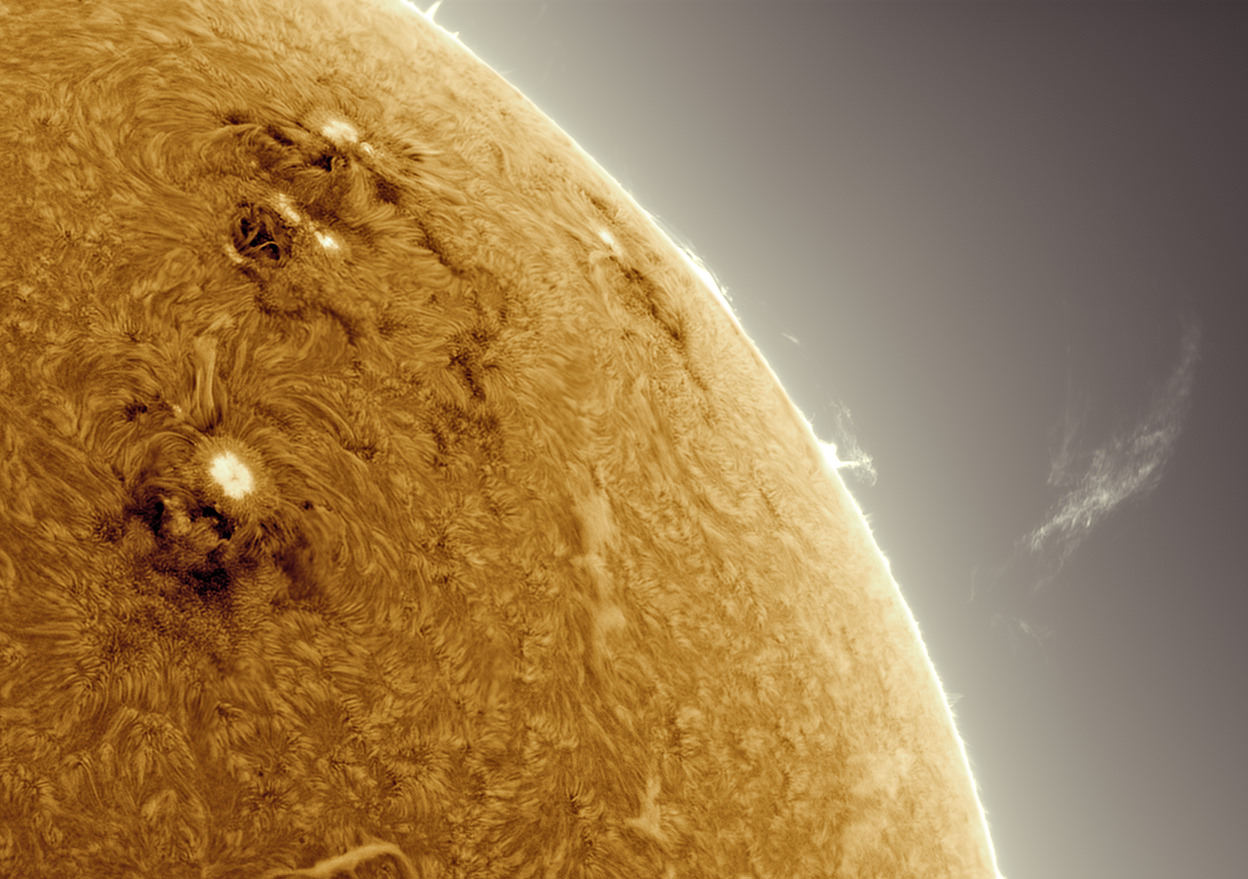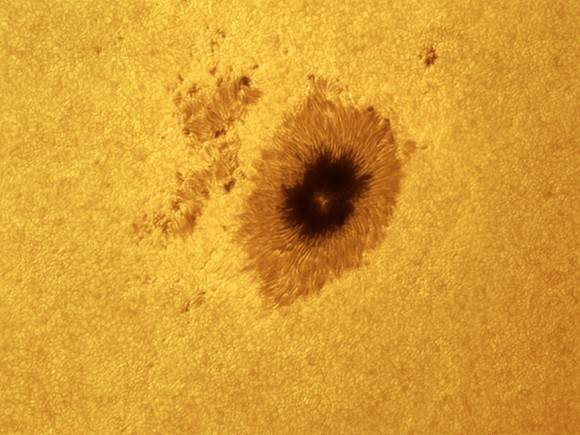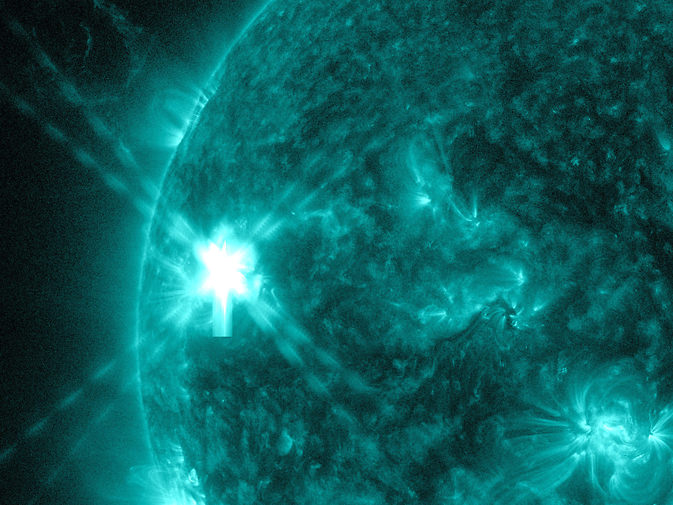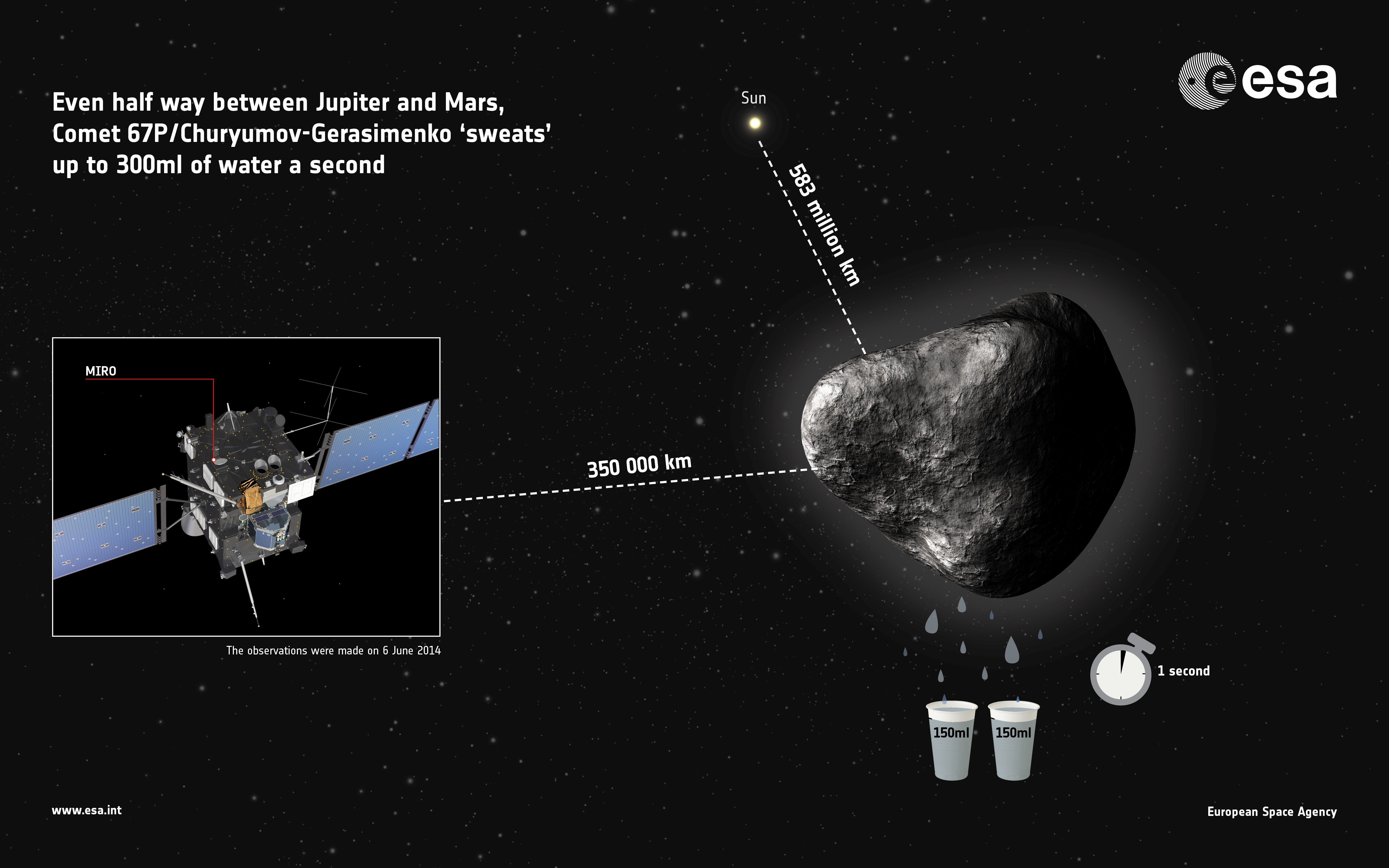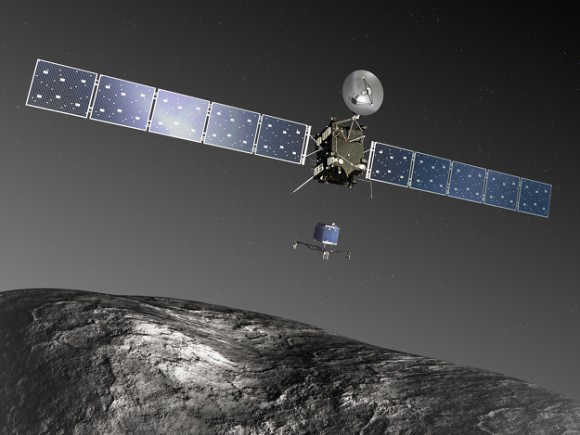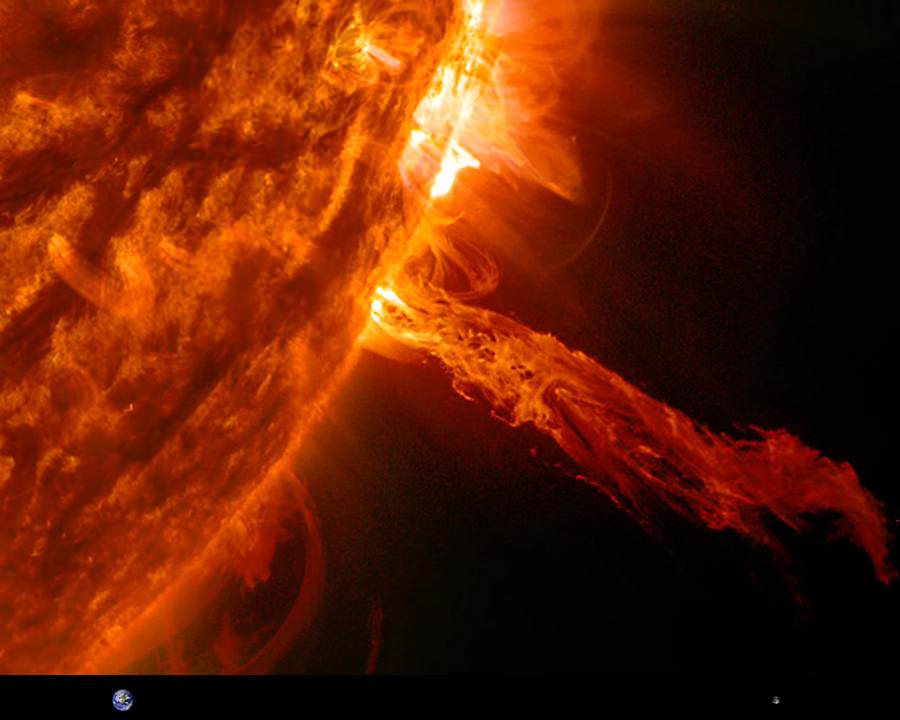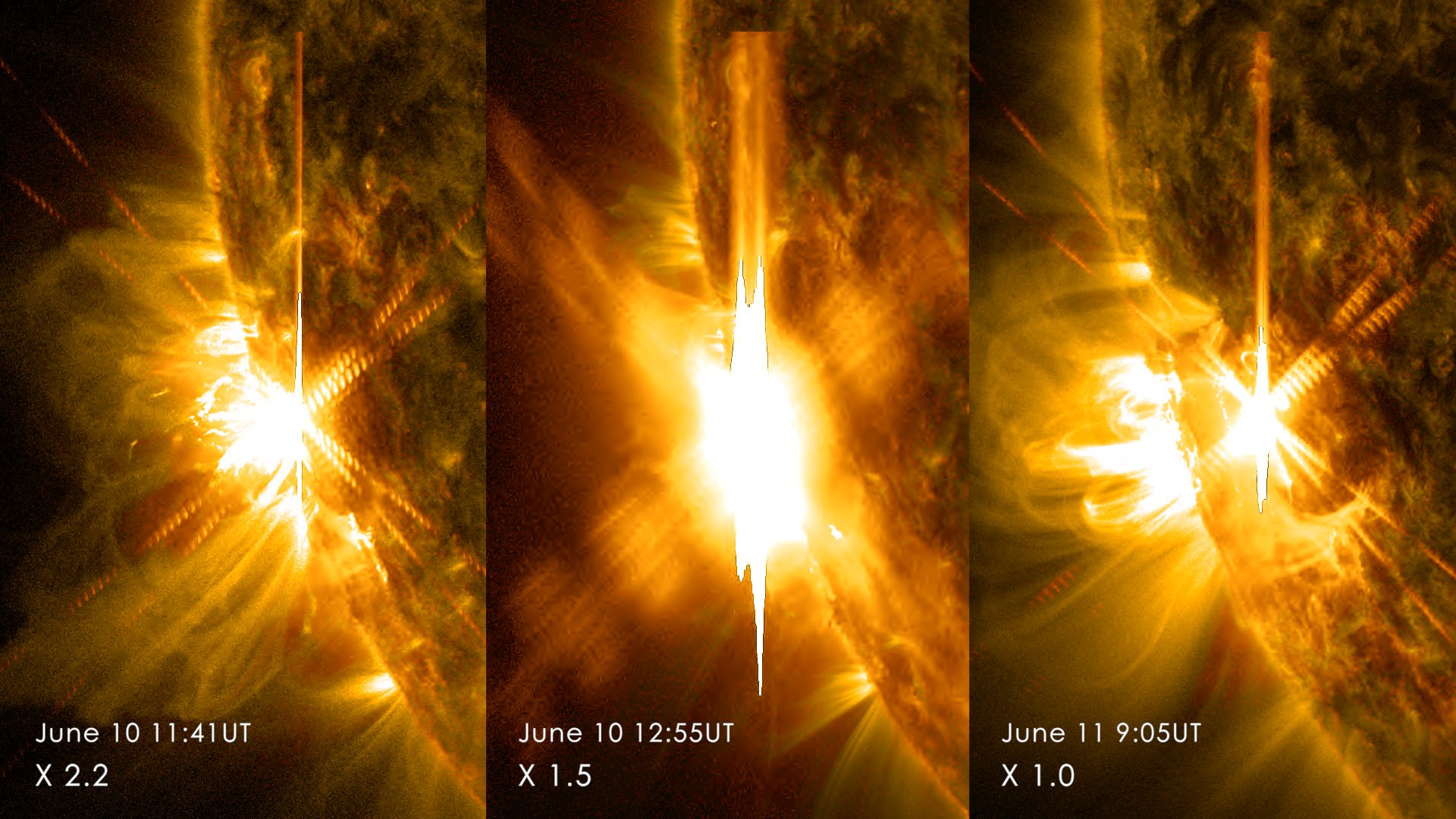Here’s a solar flare with a little flair added! Astrophotographer Rick Ellis from Toronto, Canada created this “artsy” Sun by using a series of photoshop filters and effects with a combination of two images from the Solar Dynamics Observatory taken on April 12, 2013. He tinkered with the contrast at specific color ranges, applied “equalization,” and used a filter called “accented edges.”
“Then I posterized it and ran it through the “posterize edges” filter which really brings out many details,” Rick said via email.
Rick admitted to some confusion about the difference between solar flares and coronal mass ejections, and so we figured this might be a good time to explain. They do have several similarities, however: both solar flares and CMEs are energetic events on the Sun that are both associated with high energy particles, and they both depend on magnetic fields on the Sun.
In the case of a CME, coronal material is ejected into space at high speeds. According to Berkeley University the most obvious difference between a solar flare and a CME is the spatial scale on which they occur.
“Flares are local events as compared to CMEs which are much larger eruptions of the corona,” says the Berkeley webpage, and sometimes a CME can be larger than the Sun itself. Solar flares and coronal mass ejections often occur together, but each can also take place in the absence of the other.
Want to get your astrophoto featured on Universe Today? Join our Flickr group or send us your images by email (this means you’re giving us permission to post them). Please explain what’s in the picture, when you took it, the equipment you used, etc.

